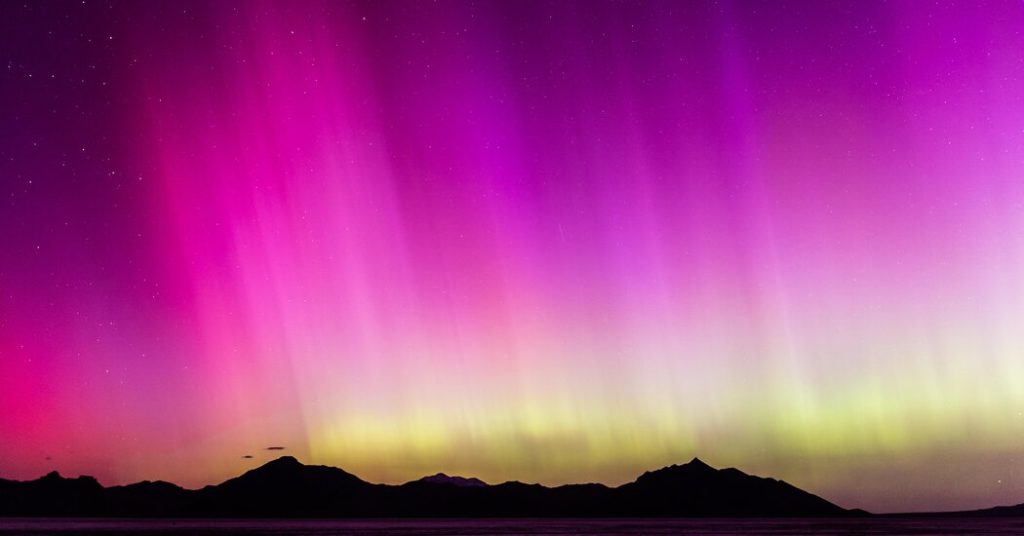The aurora borealis, also known as the northern lights, has been unusually prevalent since Friday and could be visible again on Sunday night in much of the United States as a powerful geomagnetic storm continues. The glowing green, pink, and purple lights have been observed from locations much farther south than usual, including the United States, England, and parts of Central America. The National Oceanic and Atmospheric Administration’s Space Weather Prediction Center predicts that the lights will be visible again on Sunday night in places with clear, dark skies. The forecast indicates that the storm may be quite comparable to what was seen on Friday.
Mike Bettwy, the operations chief of the Space Weather Prediction Center, mentioned that the aurora “ebbs and flows without much reason,” making it difficult to predict the best time to view the phenomenon. The darker the sky is, the higher the chances are of seeing the lights. However, areas with a lot of bright lights, such as cities, may find it more challenging to see the aurora. Additionally, cloudy weather can block the view, posing a challenge for those in the central United States where rain and storms are forecasted. Areas with the best chances for clear skies include much of the West, Ohio toward the Mid-Atlantic, and possibly North Dakota and Minnesota.
The best way to capture the aurora borealis is to take a picture or record a video with a cellphone. The camera’s sensor is more sensitive to the wavelengths produced by the aurora and may reveal a different image than what can be seen with the naked eye. This weekend’s aurora display is the result of the most powerful geomagnetic storm to reach Earth since October 2003. When geomagnetic activity increases, auroras become brighter, more active, and expand to regions where they are not typically seen. The Space Weather Prediction Center uses a five-level scale to rate geomagnetic storms, with a watch in place on Sunday for conditions to reach the fourth level or higher.
On Saturday, the storm’s conditions ranged from the third to the fourth level, with a brief period of level-five conditions early in the day. Geomagnetic storms can potentially interfere with power grids, communications, and navigation systems. However, as of Sunday morning, there had been no significant impacts from the storm, according to the Federal Emergency Management Agency. The storm is expected to continue into Monday, according to the Space Weather Prediction Center. Thunderstorms were moving north across the United Kingdom on Sunday night, making visibility a question mark in some areas. If you are in a clear area, be sure to take the opportunity to witness and capture this spectacular natural phenomenon.








